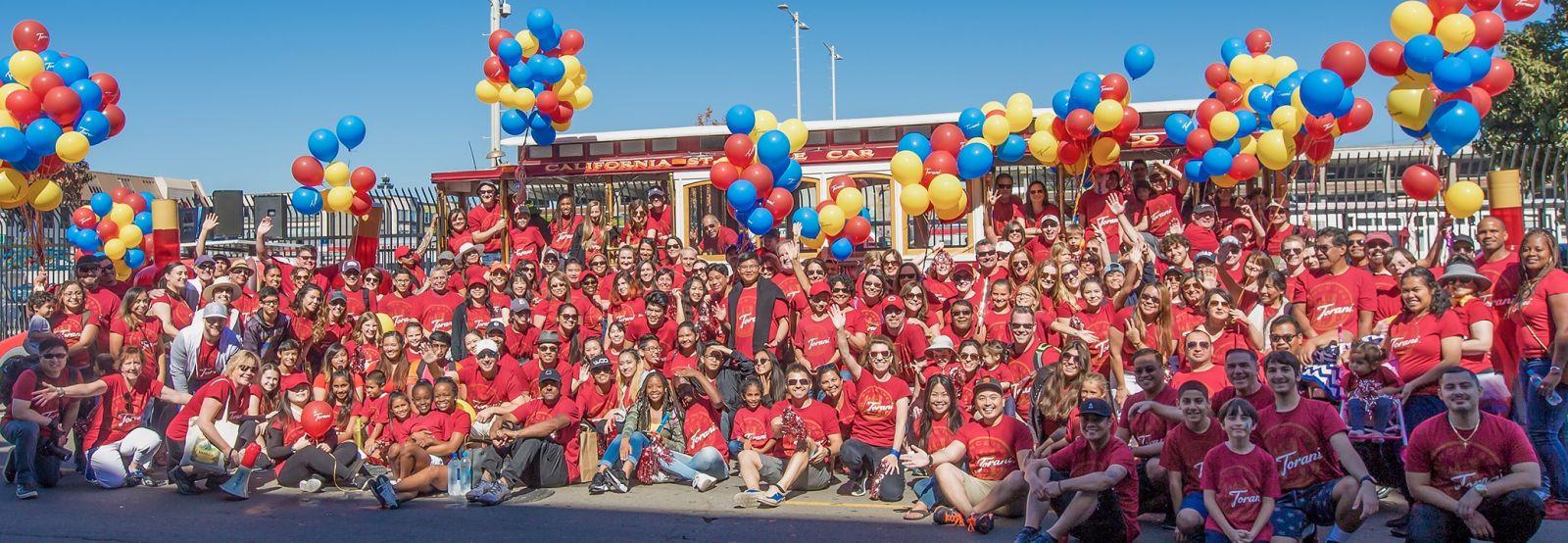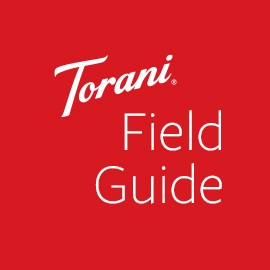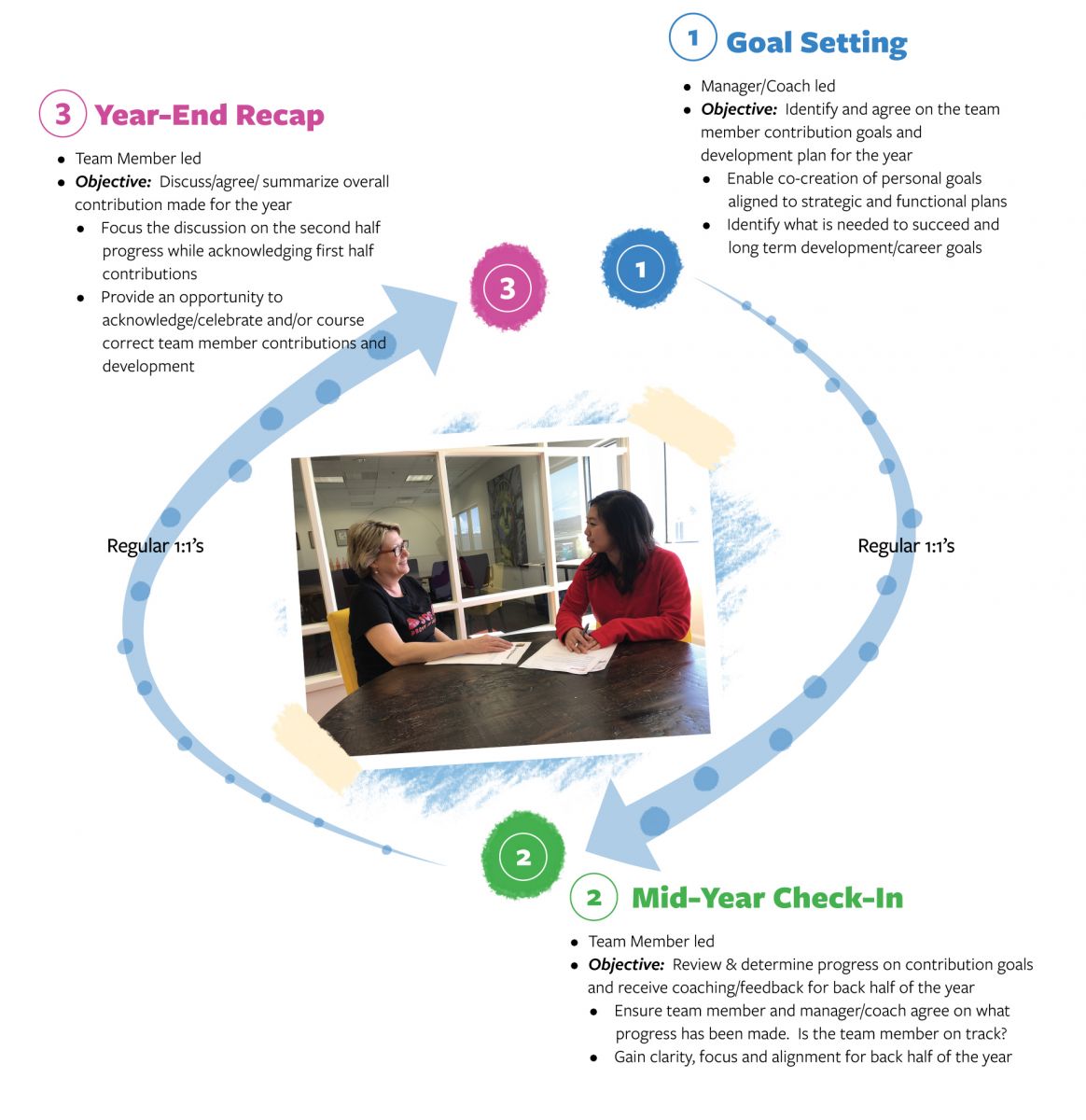Inside Torani
Ditch Performance Management & Unleash the Potential of People
There had to be a better way
We’d been on the lookout a long time (decades!) for great coaching and development models for our team at Torani -- ideas that could truly help performance. For us, that meant anything BUT performance reviews, or a classic performance management system. We find the traditional performance review experience to be a little demoralizing and a big waste of time. After all, how many of us feel inspired sitting before another in judgement, being told how we’ve done? Even when the feedback is positive or meant to be complimentary, it’s rarely developmental. And we aren’t alone in our thinking. According to Gallup, only 14% of employees strongly agree their performance reviews inspire them to improve.
With people at the center of how we think about our business and growth, we tried many different approaches. We’d zeroed in on coaching models but hadn’t dialed it in. We were searching for processes to stimulate more conversation, use more inquiry, and give development a boost. We knew there had to be a better way. But nothing seemed quite right.
A fresh perspective
Then one day, Catriona Wiley walked through our door to interview for VP of People & Culture – and it felt like fate. The search, not only for a new member of the team, but also for a better way, was over. Catriona cracked open our thinking and possibilities when she shared a concept around Contribution. We were smitten.
Here’s the gist of it: fundamentally, Contribution is about expanding a team member’s potential in the present and in the future, whereas Performance is about the manager judging, looking backwards. Most importantly, Contribution conversations shift the dynamic between the manager and the team member. While performance reviews can feel like they’re being “done to you,” contribution discussions invite individuals to contribute, allowing each person to own their own contribution. That puts the team member much more in the driver’s seat.
Another game changer is that contribution conversations fully integrate a person’s development interests, whether those interests are within or beyond their current role. The manager, as coach and sounding board, helps the individual consider and look for opportunities to exercise those interests.
This goes beyond coaching and development, creating a cycle of growth and success for team members and the company. We couldn’t wait to get started, and set to work crafting a framework around Contribution Management that would grow right into our DNA.
The Nuts and Bolts (or….Secret Sauce)
The annual contribution management process consists of three formal conversations, supported by regular coaching 1:1’s throughout the year.
1. Goal Setting
- Manager/Coach led
- Objective: Identify and agree on the team member contribution goals and development plan for the year
- Enable co-creation of personal goals aligned to strategic and functional plans
- identify what is needed to succeed and long term development/career goals
2. Mid-Year Check-In
- Team member led
- Objective: Review and determine progress on contribution goals and receive coaching/feedback for back half of the year
- Ensure team member and manager/coach agree on what progress has been made. Is the team member on track?
- Gain clarity, focus and alignment for back half of the year
3. Year-End Recap
- Team Member led
- Objective: Discuss/agree/summarize overall contribution made for the year
- Focus the discussion on the second half progress while acknowledging first half contributions
- Provide as an opportunity to acknowledge/celebrate and/or course correct team member contributions and development
In the first formal conversation, Goal Setting, all team members, including the CEO, set their annual goals plus identify development opportunities and plans for the upcoming year. We typically do this in the beginning of a fiscal year.
.jpg)
The Goal Setting conversation is usually led by the manager/coach, who actively engages the team member in discussing and creating their goals and development plan. Much of their time is focused on identifying the 3-5 most important goals that align to strategic or functional plans. Through the conversation, they also identify what is required to help the Team Member succeed (for example, skills, budget, resources, etc.). Additionally, they devote at least 25% of their conversation to the team member’s longer-term learning interests and career goals. This shared understanding helps surface opportunities to develop new skills, expand current responsibilities, or initiate a project or assignment that explores their interests. While development plans may not have a direct relationship to the annual contribution goals since they are longer term focused, we find that magic happens when they can be linked. (See 70/20/10 image)
70/20/10
We love the 70/20/10 model as a guide to creating the optimal learning and development opportunities for our team members. Whereas many companies tend to think of development as formal education/training, we break it down this way instead:
- 70% from job-related experiences such as stretch assignments, additional responsibilities, leading a project, etc.
- 20% comes from interactions/relationships with others such as coaching, mentoring and buddying
- 10% from formal training/education courses or events
.jpg)
The Mid-Year Check In conversation is led by the team member, and is a discussion focused on how that team member assesses their progress against their annual goals and development plan.
Through discussion, the manager/coach and team member agree whether the team member is on-track for the year. We use this as an opportunity to identify any needed course corrections if the team member is struggling, and to provide any necessary coaching to help them get back on track. The manager/coach helps the team members reflect on their learnings to date, and determine if any additional resources are required. The two also align on the key focus areas for the back half of the year.
.jpg)
Then, the Year-End Recap is the close of a cycle in the annual Contribution Management process. The team member and manager/coach align on the annual contribution level for the team member. The team member prepares for the conversation by reviewing a number of thought-starter questions to help them structure the discussion they want to have with their manager/coach. What progress has been made against the agreed goals? What has been their greatest learning this year? What would they do differently in future? And more.... We recommend that the team member completes and provides their brief write-up in advance so the manager/coach can prepare great questions to further explore the input from the team member and, of course, provide feedback where needed. What made this the greatest learning for the person? How might they apply this learning moving forward? At the end of this discussion, the manager/coach captures the key points of the conversation on a Year-End Recap Summary sheet. (See Dialogue vs Documentation image)
Dialogue vs. Documentation
We are all about the dialogue and not the paper!
At the heart of Contribution Management is deep, meaningful conversation. Therefore we recommend skinny-ing down the paperwork as much as possible. We make great use of one pager summary sheets for mid-year and year-end conversations.
Are You "Doing Great"?
Instead of force-ranking people and/or applying a bell-shaped curve, we use a simple 4-level descriptive scale, focused on "Doing Great." This reduces concern about categorization and enables great focus on the conversation.
- Above & Beyond
- Doing Great
- Not Quite On Pace
- Critical Contribution Gap
We expect everyone to be "Doing Great." If we find an individual is off-track, we believe it's important to have the conversation to provide the opportunity to course correct.
If it's worth doing, it's worth getting started
It took us three years to get the hang of this. (Really!) We had debated when and how to implement the process, and gave ourselves the permission to simply get started and build our capability over time. Rather than getting it perfect, we figured out how to begin, and launched it with a three-year timeline. Starting it cemented our whole team’s commitment to the process, and the longer timeline created a more comfortable environment to try something new and develop capability together.
To get it kicked off, we focused in on the Year-End Recap (as it was coming up), and on how to build the capacity of everyone to have a great conversation.
Changing mindsets
Traditional performance management very much puts the manager in control. So it can be a real challenge for managers to accept and embrace a true, two-way conversation vs. control. It requires shifting into a coaching role, and using inquiry skills to create the space for reflection and learning. For example, when hearing from a team member about their accomplishments, a coach might ask, “What is the accomplishment that you are most proud of?” And, “Why are you proud of that achievement?” This creates the space to pause and reflect in a learning environment as well as focus the conversation on the most significant contributions. It also invites the team member to step forward into a more conversational space. (See Are You “Doing Great” image)
What really excites us about contribution management is that it’s a two-way conversation that works for everybody in the company, in all roles at all levels. It’s for a frontline team member in manufacturing or distribution just as much as it’s for a director in sales or R&D. It’s for me as CEO with our board of directors. It underscores development and is fundamentally pretty simple. But what isn’t simple is changing mindsets. It takes time to get everyone on board to the idea of a two-way conversation that puts the individual team member much more in the driver’s seat. Especially for managers! It’s a really big shift.
So…to create the conditions for success, we needed to build the confidence and conversational capacity of team members, and the coaching and inquiry skills of managers.
Take baby steps
The first step was to change the vocabulary and set a new context for the organization. “Contribution” evokes different feelings and relationships than “performance”. We tweaked our documentation to better align with the concept of contribution, and introduced it through group sessions across the organization. We had separate sessions for managers to help reinforce the two-way conversation.
The next baby step was to practice. Team members wrote their own year-end recap, and managers prepared for the conversation. Was our first time around perfect and consistent across the organization? No. But people began to use the word contribution, and that was a good start.
Six months later, the next baby step was to introduce the Mid-Year Check In. We continued to train people, and asked each individual to consider with their manager/coach, “How am I doing? Am I on track (or not) with what I set out to accomplish?” Baby steps continued over the next two years, with a strong focus on building coaching capability.
Impact in Motion
It took us the three years we allowed ourselves to fully implement Contribution Management. In our almost 95-year-old company, it was worth the wait. Conversations are more meaningful. People are stretching, growing, and trying new things. We are filling many of our open positions with internal candidates who’ve actively developed themselves (in some cases into roles they might never have considered before).
And, importantly, people no longer stress out over the annual process. When the next Contribution cycle rolls around, no worries. It’s an opportunity to discuss growth and development. We’ve begun to hear “uplifting” and “enjoyable” to describe the process. What a shift! This dynamic alone contributes to a culture of engagement and effectiveness. And we haven’t skipped a beat in growing our business, which is of course a key point. It’s an expanding circle of success.
Contribution management is a framework that unleashes talent, inspires personal development, and helps drive business growth. So…if you’re considering what to do with your performance management system, we hope you’ll toss it. And join us on the journey to develop better ways for people + company growth.

 We believe companies flourish when they care deeply for people. Our people practices have helped us to grow by double digits for over 20 years, and we want to explore these practices with you. These field guides are meant to inspire and inform people who share our passion for using business as a force for good in the world. We look forward to your thoughts and ideas on ways we can create more opportunities for people, partners and communities to thrive.
We believe companies flourish when they care deeply for people. Our people practices have helped us to grow by double digits for over 20 years, and we want to explore these practices with you. These field guides are meant to inspire and inform people who share our passion for using business as a force for good in the world. We look forward to your thoughts and ideas on ways we can create more opportunities for people, partners and communities to thrive.




